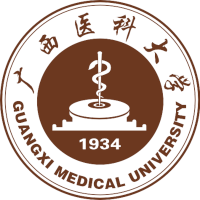Guangxi Medical University
Guangxi Medical University (GXMU) is a prominent medical school located in Nanning, Guangxi, China. Established in 1934, it is one of the oldest and most respected medical universities in the country, dedicated to excellence in medical education, research, and healthcare services. The university plays a pivotal role in medical education and healthcare in the Guangxi region and beyond.
History[edit | edit source]
Guangxi Medical University was founded in 1934, amidst the backdrop of a growing need for medical professionals in China. Over the decades, it has evolved from a small institution into a comprehensive medical university, offering a wide range of programs in medicine, including undergraduate, postgraduate, and doctoral studies.
Campus[edit | edit source]
The university's main campus is located in Nanning, the capital city of Guangxi. It boasts state-of-the-art facilities, including modern laboratories, research centers, and teaching hospitals. The campus provides a conducive environment for learning, research, and community engagement.
Academic Programs[edit | edit source]
GXMU offers a broad spectrum of academic programs across various fields of medicine and health sciences. These include but are not limited to:
- Bachelor of Medicine, Bachelor of Surgery (MBBS)
- Nursing
- Pharmacy
- Public Health
- Biomedical Engineering
The university is renowned for its rigorous curriculum, which combines theoretical knowledge with practical skills. Students have opportunities for hands-on training in the university's affiliated hospitals, which are among the top healthcare facilities in the region.
Research[edit | edit source]
Research at Guangxi Medical University is highly regarded, with a focus on areas such as tropical medicine, infectious diseases, and traditional Chinese medicine. The university has established several research institutes and centers to foster innovation and collaboration in medical research.
Affiliated Hospitals[edit | edit source]
GXMU is affiliated with several hospitals, which serve as teaching and research facilities for students and faculty. These hospitals are equipped with advanced medical technologies and provide a wide range of healthcare services to the community.
International Collaboration[edit | edit source]
Guangxi Medical University has established partnerships with numerous universities and research institutions around the world. These collaborations facilitate academic exchanges, joint research projects, and opportunities for students and faculty to gain international exposure.
Notable Alumni[edit | edit source]
Over the years, GXMU has produced a distinguished list of alumni who have made significant contributions to the medical field and healthcare industry.
Admissions[edit | edit source]
Admission to Guangxi Medical University is competitive, with candidates being evaluated based on their academic achievements, entrance examination scores, and other relevant criteria. The university also welcomes international students, offering programs in English to cater to a global audience.
Conclusion[edit | edit source]
Guangxi Medical University remains at the forefront of medical education and research in China. Its commitment to excellence, innovation, and community service has established it as a key institution in shaping the future of healthcare in China and beyond.
Search WikiMD
Ad.Tired of being Overweight? Try W8MD's physician weight loss program.
Semaglutide (Ozempic / Wegovy and Tirzepatide (Mounjaro / Zepbound) available.
Advertise on WikiMD
|
WikiMD's Wellness Encyclopedia |
| Let Food Be Thy Medicine Medicine Thy Food - Hippocrates |
Translate this page: - East Asian
中文,
日本,
한국어,
South Asian
हिन्दी,
தமிழ்,
తెలుగు,
Urdu,
ಕನ್ನಡ,
Southeast Asian
Indonesian,
Vietnamese,
Thai,
မြန်မာဘာသာ,
বাংলা
European
español,
Deutsch,
français,
Greek,
português do Brasil,
polski,
română,
русский,
Nederlands,
norsk,
svenska,
suomi,
Italian
Middle Eastern & African
عربى,
Turkish,
Persian,
Hebrew,
Afrikaans,
isiZulu,
Kiswahili,
Other
Bulgarian,
Hungarian,
Czech,
Swedish,
മലയാളം,
मराठी,
ਪੰਜਾਬੀ,
ગુજરાતી,
Portuguese,
Ukrainian
Medical Disclaimer: WikiMD is not a substitute for professional medical advice. The information on WikiMD is provided as an information resource only, may be incorrect, outdated or misleading, and is not to be used or relied on for any diagnostic or treatment purposes. Please consult your health care provider before making any healthcare decisions or for guidance about a specific medical condition. WikiMD expressly disclaims responsibility, and shall have no liability, for any damages, loss, injury, or liability whatsoever suffered as a result of your reliance on the information contained in this site. By visiting this site you agree to the foregoing terms and conditions, which may from time to time be changed or supplemented by WikiMD. If you do not agree to the foregoing terms and conditions, you should not enter or use this site. See full disclaimer.
Credits:Most images are courtesy of Wikimedia commons, and templates, categories Wikipedia, licensed under CC BY SA or similar.
Contributors: Prab R. Tumpati, MD

